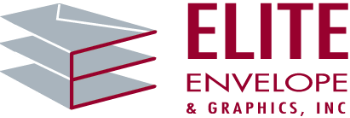Web printing has nothing to do with the World Wide Web. (It would be interesting to do a survey to see how many people actually know that’s the term referenced in the “www” in web addresses). It’s understandable that many non-printer buyers who hear that Elite Envelope & Graphics does cold web printing automatically think it’s something done with a computer. Well, our 8 color Didde Colortech press does have a computer attached but it’s for assuring the proper balance of CMYK as we lay down another awesome print job.
The “web” part comes from the fact that the paper printed in these presses starts as a roll. As the roll unwinds through the press, it wraps around a series of rollers designed to keep the paper taut in order to maintain proper registration of the printing. This creates the look of a “web” of paper; hence the name. The photo just below shows our two web presses from the back and gives you an idea of what I’m talking about.
Commercial presses print on either individual sheets (sheet-fed) or rolls of paper (web). Most high-end printing is done on sheet-fed presses. There are a lot of reasons for that but suffice it to say, both types of printing have their place depending on the individual job. Web printing has its advantages over sheet fed for things like long runs of individual sheets; newspapers and broadsheets, booklets and perforated items. There are a lot of different web presses out there and each has its own unique features and strengths. Here’s a list of five hypothetical jobs that are tailor-made for our particular web presses and which would be suitable for just about any similar type of press.
Letter size (8 ½ x 11) individual cut sheets for letterhead, statements or invoices.
Postcards for mailing or binding in a catalog or booklet
Buck slips (usually 3 ½ x 8 ½)
8, 12, 16 or 24 page booklet/self-mailer (ideal page size 8 ¼ x 10 ¾)
Placemats (11 x 17) used routinely by diners and restaurants
The most common stocks for the above jobs would be 50-70# offset or opaque or 7-9 point hi- bulk for the cards. Since perforating can be done in-line as the item is printed, any of the above items which contain perforated lines make it an even better value and better suited for the web press. There can be multiple perforations or even cross-perforations on a single piece. Folding for any of the cut sheets: e.g. a trifold letter size sheet to fit in a #10 envelope, is another ideal characteristic for a web job.
Any of the above items can be printed from simple black up to and including 4 color process on both sides. Newer web equipment features high resolution color printing which produces sharp, clear images suitable for all manner of direct mail applications.
The moral of the story is that anyone who buys print should know what works best on a web press versus sheet-fed. Many buyers we work with will order one or two components out of a direct mail package to print web for the best price. We hope this helps to clarify where you might start looking to make those buying decisions. It could very well save your company money and make you look very smart. Of course we realize you’re already smart because you’ve read this piece to the very end. Oh, and you can get further information on our webs from the world-wide web at www.eliteenvelope.com.
